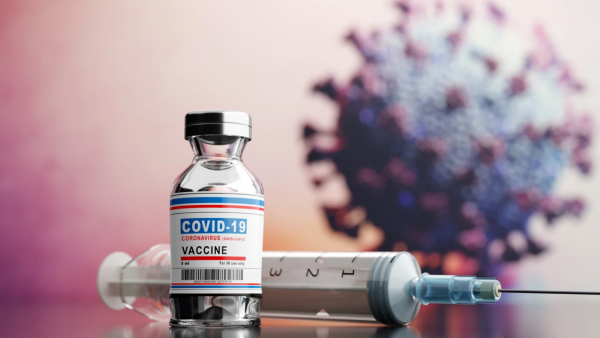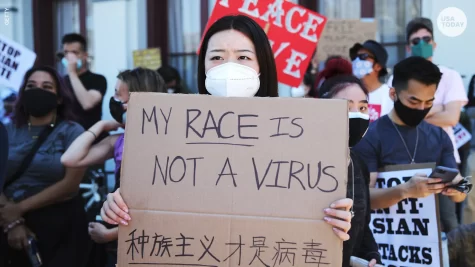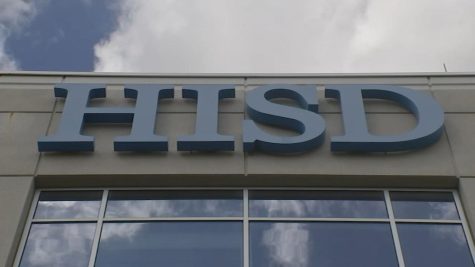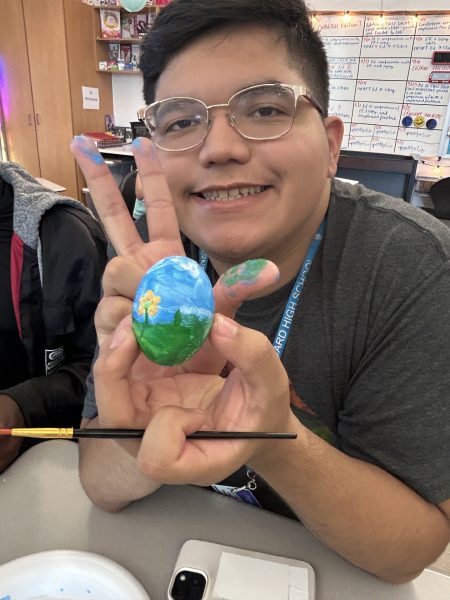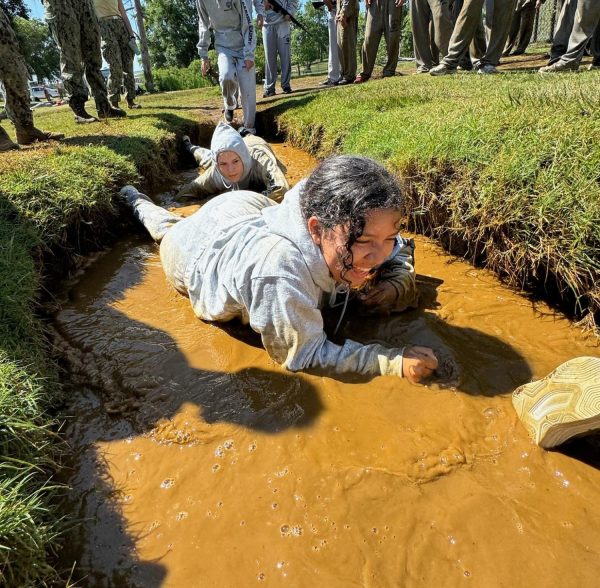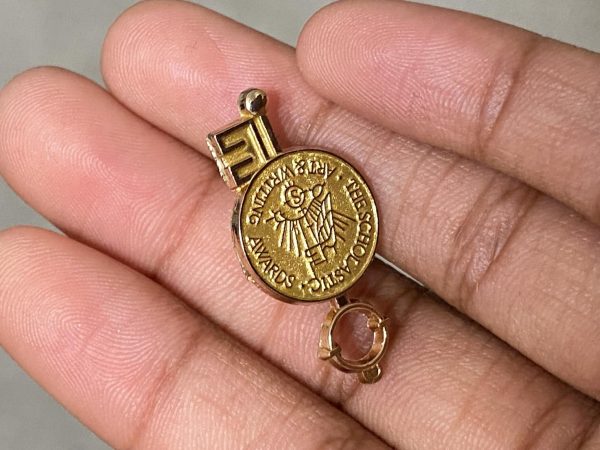An all-too familiar past: unfolding two of the past centuries’ deadliest pandemics
(top)Photo by Max Loudon, Courtesy Grace Loudon McAdam (bottom)Eduardo Munoz / VIEWPRESS VIA GETTY
(top)Seattle drugstore employees gather downtown amid 1918’s influenza pandemic (bottom)Pedestrians crossing the streets of downtown New York City mid- COVID-19 pandemic, 2020
With the global population enduring the unwelcomed arrival of COVID-19, our lifestyles have unanimously veered into a bender. We find ourselves in an age with no guidelines, where the amount of honors classes and life experience seem to fall short of preparing us to live in the wake of a pandemic. This is not the first time this has happened. Paradoxically, we are reawakening the past.
DEMOGRAPHICS
From 1918-1919, the influenza A virus strain H1N1 pounded its way across the planet in what history calls the “Spanish flu” pandemic. 500 million cases, or about ⅓ of the world’s population, accumulated worldwide. This led to approximately 50 million deaths, with 675,000 coming from the U.S
Since December 2019, the coronavirus strain COVID-19 has sped across the globe, infecting habitable lands at an alarming rate in what we call the coronavirus pandemic. Identified cases are rising by about 80,000 a day, totalling to 4.31 million cases as of May 13, 2020. Around 294,155 deaths have been lost to the disease, with around 83,807 coming from the U.S.
ORIGIN
It’s unknown where the Spanish flu originated. In actuality, the referral of “Spanish” flu is the product of an epic misunderstanding. Because most nations were submerged in the devastating conditions of World War I, the outpour of national media was stifled behind mid-war censorship and efforts to maintain a boosted morale. Spain was part of the skim of nations that remained neutral during wartime, therefore they first released headlines sparing no detail of the outbreak in late-May 1918. Consequently, foreign countries who relied on Spanish media during this time assumed this meant that Spain was the homeland of the deadly disease, which is believed to be of avian/bird-related origin.
The first cases of COVID-19 were reported in Wuhan, China, on December 31, 2019 by the Wuhan Municipal Health Commission, China. Suggestions imply that coronavirus likely originated from a bat.
PROGRESSION/AFFECTED GROUPS
The Spanish flu occurred in three phases, with skyrocketing levels of cases among populations ages 5 years and under, 20-40 years, and 65 years+. The spike in the 20-40 age category was distinct to this flu strain, because humans are typically in the peak of their health during that time period.
The U.S. has only witnessed one phase in the progression of COVID-19: the acceleration phase, which remains ongoing. Demographics of worldwide reported cases show that older age groups(60+) and those with rudimentary medical conditions(cardiovascular disease, diabetes, chronic respiratory disease, and cancer) are specifically at risk, although statistics additionally confirm that anyone is at risk of contracting COVID-19.
ECONOMIC IMPACT
Despite around 0.67% of the American population being lost to the Spanish flu outbreak, the economy was only tripped by modest and relatively small-scale shortcomings. Clusters of businesses, specifically in service/entertainment, lost revenue in the double-digits, while businesses in the healthcare field experienced an outstanding flow of revenue. Because of the amount of lives lost to the pandemic, many industries found themselves short of labor, contributing to a decrease in general economic activity. Therefore, research suggests that the shortage of workers temporarily pumped wages for the available workers.
Currently, the U.S. economy is holding its breath. Along with the relative standstill of the flow of people and goods, economic activity has significantly shuffled to a halt. Thus, unemployment rates have erupted, and the economic shock has caused a global recession affecting the majority of countries and commerce worldwide. Economies, businesses, and citizens around the world are amid a financial crisis as COVID-19 remains unprecedented.
SOCIAL RESPONSES
With no Centers for Disease Control and no Internet, U.S. citizens entered a black hole as they retreated into isolation during the pandemic’s progression. Schools, churches, theaters, saloons, and piers typically closed, although safety measures varied across different cities.
The cities of New York and San Francisco charged city-dwellers a $5-10 fee, equivalent to $85-170 in today’s currency, if they were caught in public without wearing a protective gauze mask. Hospitals were overwhelmed, which led to teams of healthcare workers to personally visit ailing homes, often to tenements where overcrowdedness and lack of sanitary practices created hotspots for the spread of deadly flu symptoms. Businesses and factories that remained open kept staggered operating hours issued by their municipalities in effort to reduce rush hour crowds. People relied on public service campaigns in the form of leaflets and posters to stay informed on safety precautions. This included the presence of “Obey the laws, wear gauze”posters, and the “Ban the cup” campaign, which prohibited the use of the single community cup shared at public drinking fountains.
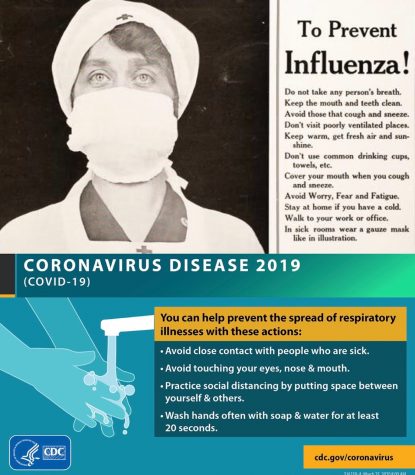
OUTCOMES/HOPE FOR THE FUTURE
Many children became orphaned, as deadly flu numbers mysteriously soared among the young adult population. Philadelphia was notably hit the hardest, while cities like St.Louis, Milwaukee, and New York City managed to flatten the curve through strict enforcement of cautionary social standards. In some cases, cities suffered from celebrating too early, and were devastated by a re-flare of flu cases once public restrictions were lifted. In the end, the country was ravished by both war and sickness in less than two full years. As time pushed the years of 1918-1919 further away, the remaining citizens of the era desired to leave their pandemic memories with the time period. It’s as if the years after were like waking up from a nightmare that you simply wanted to forget.
Forgetting the past isn’t as obtainable in today’s time. Technology and media have ensured that our digital photos, our zoom calls, our news headlines, and worldwide population statistics will be preserved within the ceaseless dimension of the Internet. People are a tap on a screen away from supporting each other from afar and staying connected to situations across local, state, national, and global scales.
Despite the solemnity of the situation, people have come to adapt and outline the silver linings of their time spent living through a pandemic. American citizen Kitty O’Meara authored her experience, noting how life has shifted:
“And the people stayed home. And read books, and listened, and rested, and exercised, and made art, and played games, and learned new ways of being, and were still. And listened more deeply. Some meditated, some prayed, some danced. Some met their shadows. And the people began to think differently. And the people healed. And, in the absence of people living in ignorant, dangerous, mindless, and heartless ways, the earth began to heal. And when the danger passed, and the people joined together again, they grieved their losses, and made new choices, and dreamed new images, and created new ways to live and heal the earth fully, as they had been healed.”
COVID-19 has yet to finish its course, but it runs alongside former pandemic Influenza A(H1N1). With the history of a century-old health devastation, it’s possible that we can draw from our predescessor’s familiarities and progress down a smoother path.
Your donation will support the student journalists of Carnegie Vanguard High School. Your contribution will allow us to cover our annual website hosting costs and fund field trips, competition fees, and equipment. We appreciate your support!

Hi! I'm a junior, and I'm really passionate about listening to people's stories.


